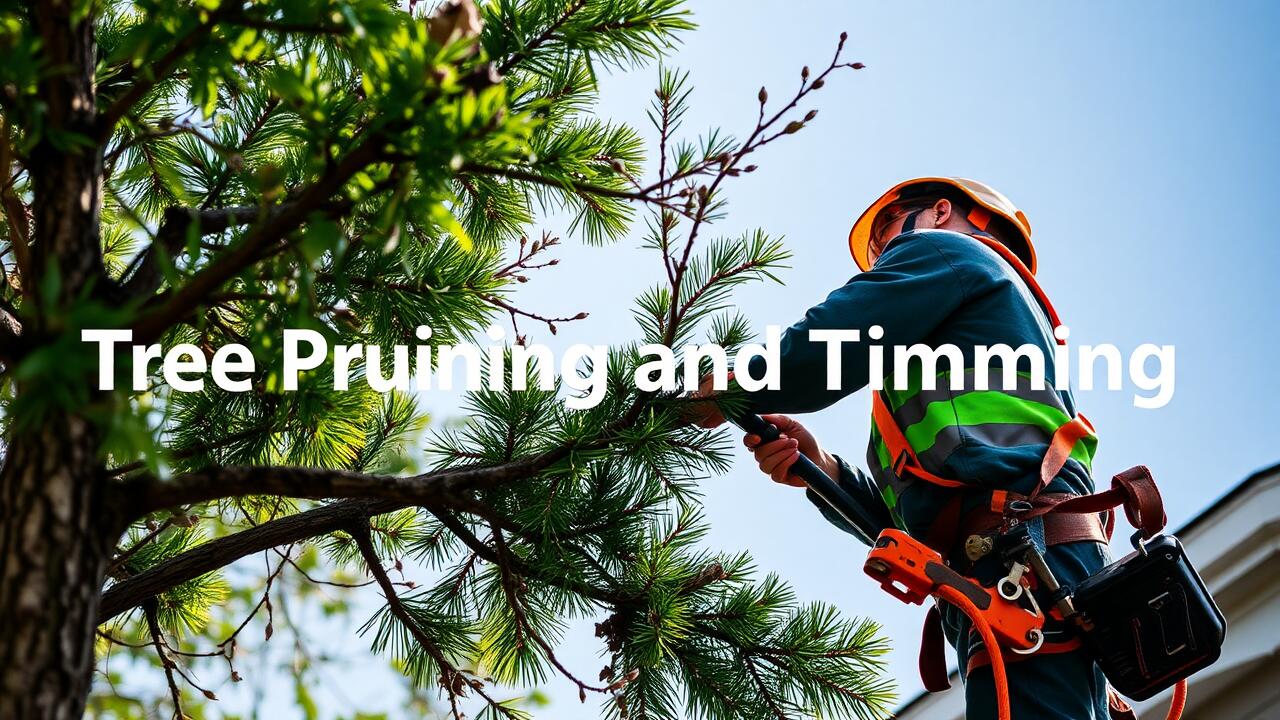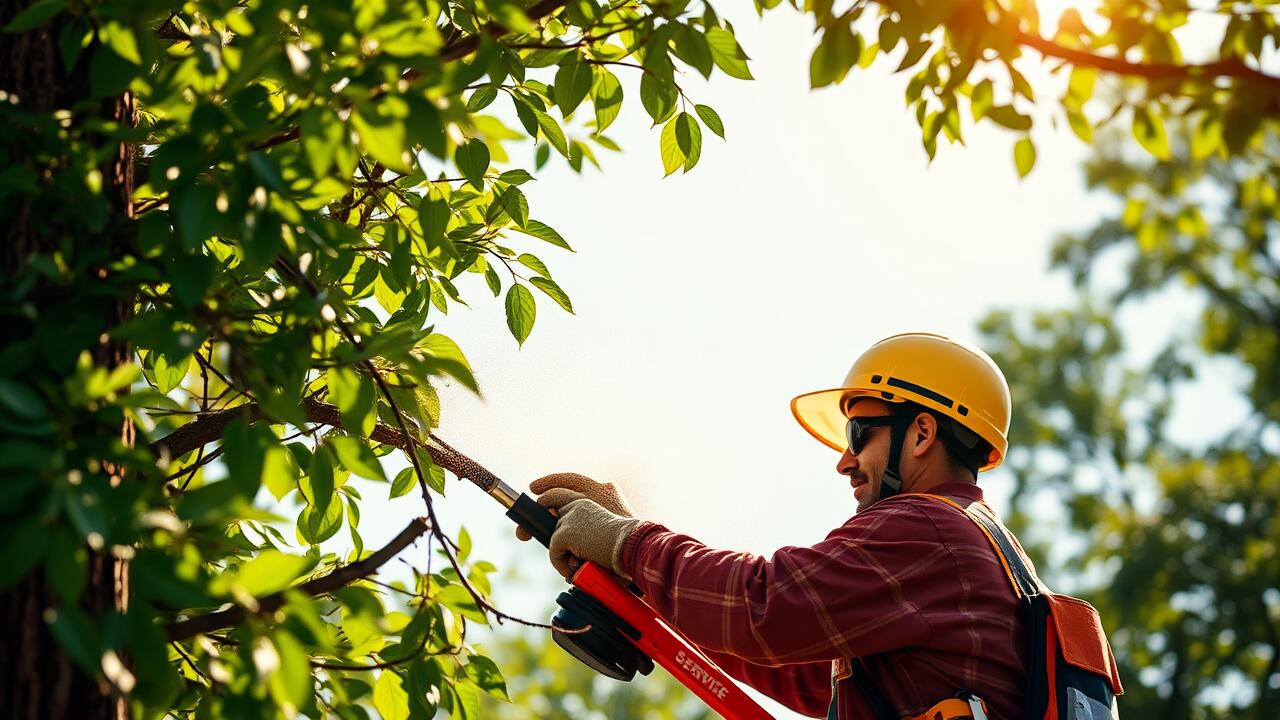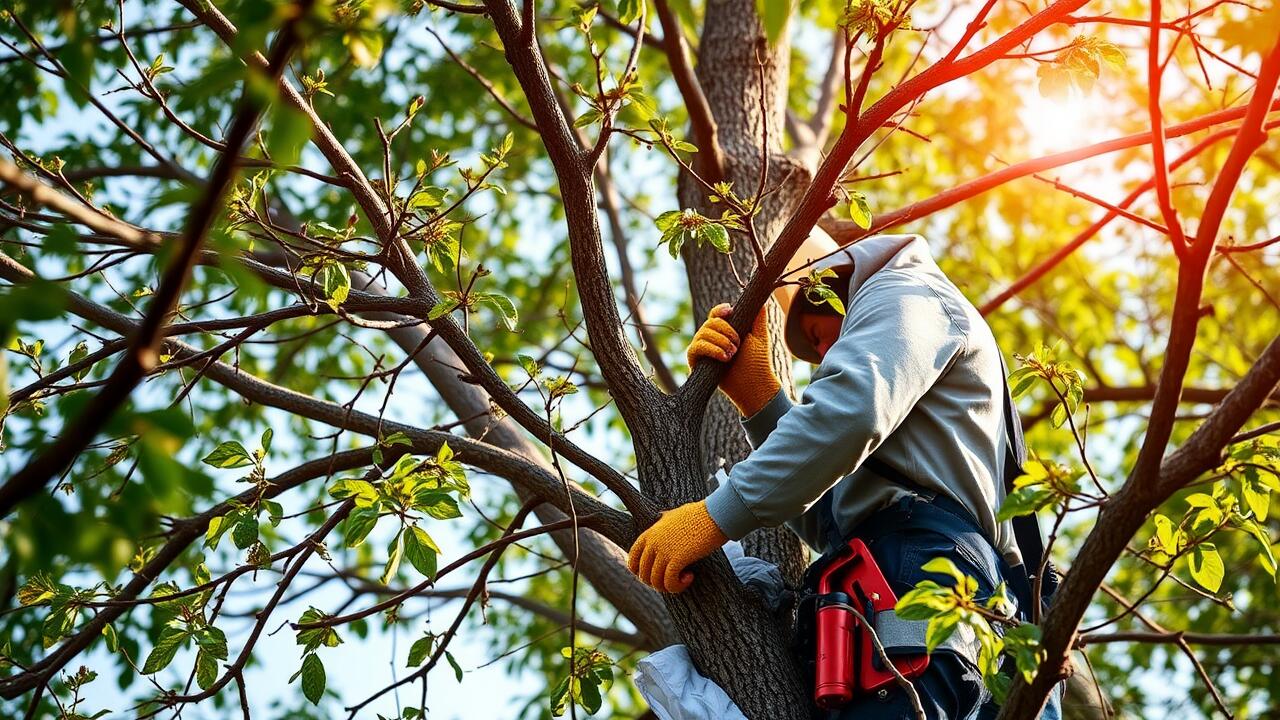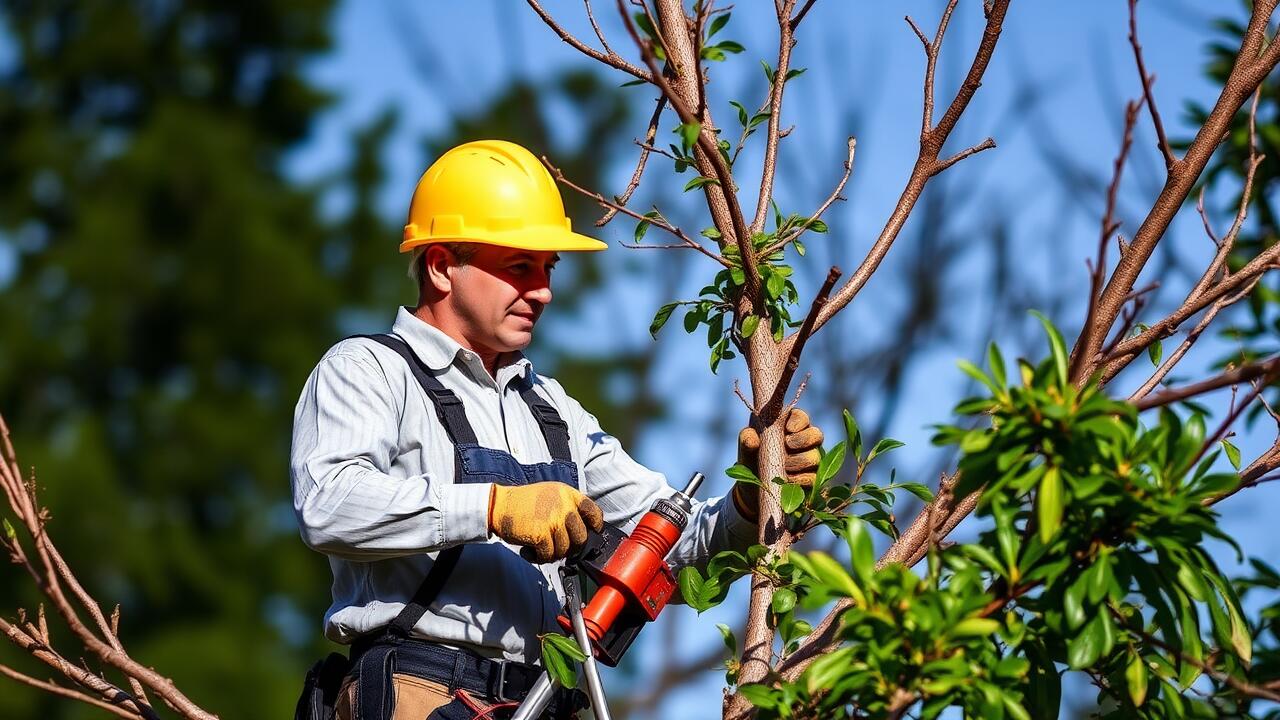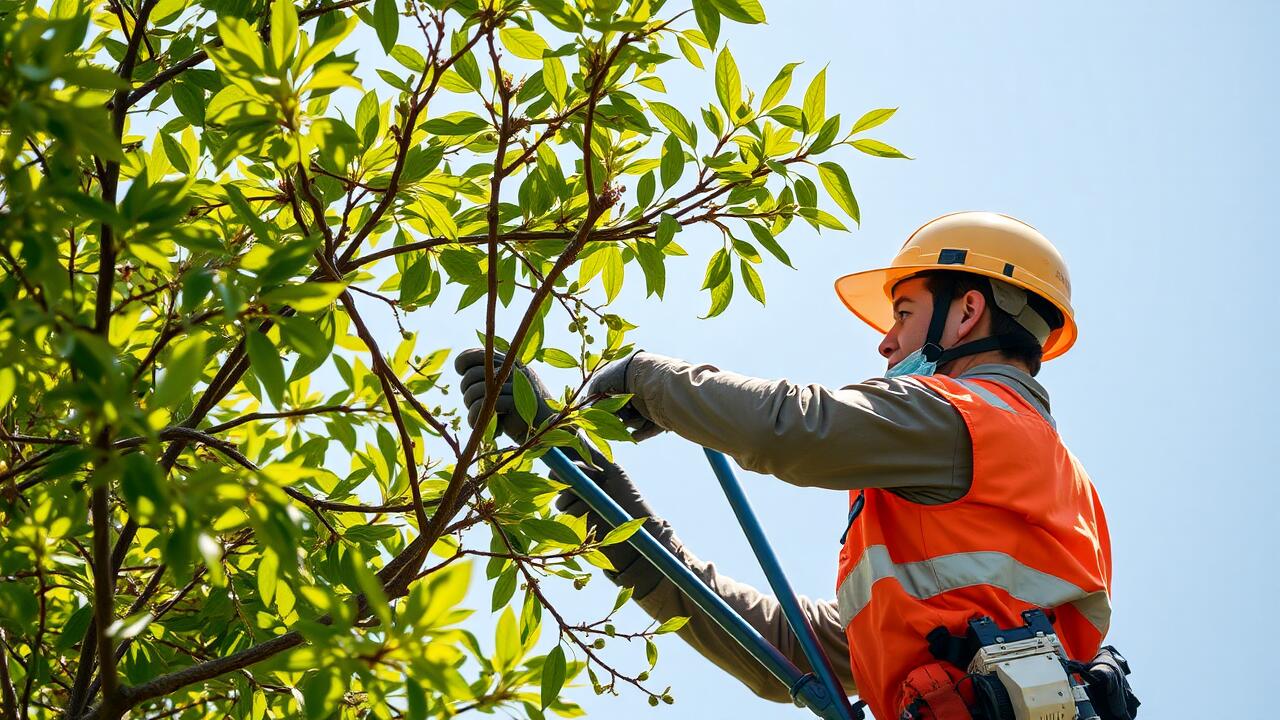
Recognizing Signs of Tree Health Issues
Mature trees can exhibit various signs indicating health problems that may necessitate intervention. Yellowing leaves, premature leaf drop, and stunted growth are common indicators. Additionally, broken or dead branches often signal underlying issues. Observing tree bark is also essential; cracks, holes, or unusual discoloration can suggest diseases or pest infestations. Regular assessments help identify these issues early, allowing for timely action.
The overall structure of the tree provides further clues about its health. A lopsided canopy may indicate that one side is struggling due to insufficient sunlight, water, or nutrient intake. Fungal growth at the base or on branches often points to decay and severe damage. Residents in areas such as Druid Hills, Atlanta, should remain vigilant and consult professionals for Tree Pruning and Trimming Druid Hills, Atlanta if they notice any of these signs. Prompt attention can limit stress on the tree and encourage recovery.
Indicators That Pruning Is Necessary
Determining when a tree needs pruning involves observing specific signs that indicate declining health or growth issues. If a tree shows dead or dying branches, this can restrict its overall vitality and lead to further decay. Additionally, excessive crossing branches can cause wounds that invite pests or disease. Regular inspections can help catch these problems early, ensuring effective intervention.
Another key indicator is the tree’s inability to blossom or produce fruit, which may signify that it requires pruning to encourage growth. If the tree appears overly dense, light cannot penetrate the canopy, stifling growth below. Taking action by scheduling Tree Pruning and Trimming Druid Hills, Atlanta ensures that it receives proper care tailored to its needs. Mindfully monitoring these indicators allows for timely maintenance, fostering a healthier and more resilient tree.
How to Prune Different Types of Trees
When pruning trees, it is essential to consider the specific type of tree you are working with. Deciduous trees, such as oak and maple, typically benefit from pruning during their dormant season, which helps in stimulating growth and maintaining their shape. In contrast, evergreen trees like pine and spruce can be pruned in early spring or late summer. Understanding the growth patterns and health of the species will guide you in making the right cuts.
Utilizing appropriate tools is also crucial for effective pruning. Sharp, clean pruning shears and saws minimize damage to the tree and reduce the risk of disease. For larger branches, it may be necessary to use a method called "three-cut pruning" to ensure that the weight of the branch does not cause tearing. Proper techniques not only support the health of the tree but also align with the principles of services provided by professionals like Tree Pruning and Trimming Druid Hills, Atlanta. Selecting the right approach increases the likelihood of healthy, robust growth in trees.
Specific Techniques for Various Tree Species
Different tree species have unique growth habits and structures, which influences how they should be pruned. For example, hardwoods like oak or maple benefit from selective pruning to maintain their shape and health. Pruning during late winter or early spring encourages new growth as the tree comes out of dormancy. On the other hand, deciduous trees such as crepe myrtle can be pruned in late winter to early spring before they bloom, promoting a vibrant display of flowers.
Conifers, including pines and spruces, typically require a different approach. Light pruning can help shape the tree without compromising its health. Removing dead or damaged branches is crucial, as it allows the tree to focus its energy on new growth. When considering professional help, services like Tree Pruning and Trimming Druid Hills, Atlanta, offer expertise in deciding the best techniques for your specific tree species and ensuring effective maintenance.
Avoiding Common Pruning Mistakes
Mistakes during pruning can lead to lasting damage and hinder a tree’s growth. One common error is cutting too much at once, which can stress the tree and disrupt its natural growth patterns. It is essential to approach trimming with a plan, removing only a small percentage of the tree's foliage each year. Failing to recognize the specific needs of different tree species can also result in improper cuts, making it crucial to familiarize oneself with the characteristics of the tree being pruned.
Another prevalent mistake is using the wrong tools, which can create jagged edges that invite disease. Clean and sharp tools streamline the process and ensure clean cuts. Additionally, pruning during the wrong season can lead to complications such as sap loss or attracting pests. When considering Tree Pruning and Trimming Cabbagetown, Atlanta, it is beneficial to consult local guidelines. This ensures that techniques align with the region’s climate and the specific needs of the tree species native to the area.
Tips to Prevent Damage and Promote Growth
To prevent damage during pruning, always use the right tools. Sharp, clean pruning shears and saws help make clean cuts, reducing the risk of injury to the tree. Avoid using tools that are dull or rusted, as these can cause tears in the bark and lead to infection. Proper sanitation of tools is also crucial. Clean tools with disinfectant between cuts, especially when moving from one tree to another, to avoid transferring diseases.
Timing is another essential factor in promoting healthy growth and preventing damage. Prune trees during their dormant season, typically in late winter or early spring, to minimize stress. This practice encourages new growth in the spring while protecting the tree from potential harm. To ensure optimal results, consider reaching out to professionals like Tree Pruning and Trimming Druid Hills, Atlanta. They can provide additional guidance and ensure that your trees are cared for with expertise.
FAQS
What are the signs that my mature tree needs pruning?
Signs that your mature tree may need pruning include dead or dying branches, signs of disease or infestation, overgrowth that obstructs structures or pathways, and a lack of sunlight reaching the lower branches.
Can I prune my tree at any time of the year?
While some trees can be pruned year-round, the best time for most species is during their dormant season, typically late winter to early spring. This helps minimize stress on the tree and reduces the risk of pest infestations.
What are the common mistakes to avoid when pruning trees?
Common mistakes include cutting too much at once, making improper cuts that can lead to disease, ignoring the natural shape of the tree, and neglecting to clean your tools, which can spread diseases.
How can I ensure I'm using the correct pruning technique for my tree species?
Research the specific needs of your tree species, as different types require different techniques. Consulting a certified arborist or reliable gardening resources can also provide guidance on the best practices for pruning.
Is it necessary to use pruning sealants on cuts?
In general, it is not necessary to use pruning sealants on cuts, as most trees can heal naturally. However, in certain cases, such as large wounds or when dealing with specific diseases, a sealant may be recommended. Always consult an expert if you're unsure.
